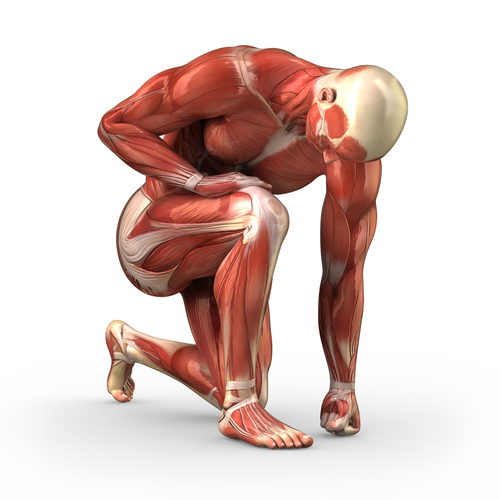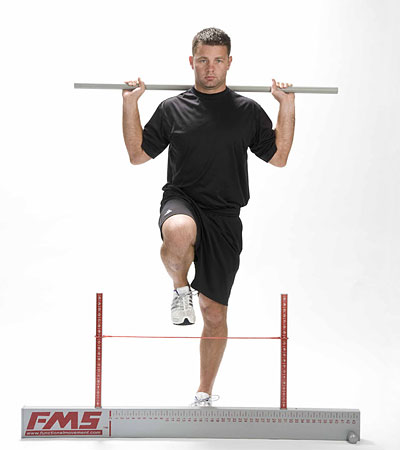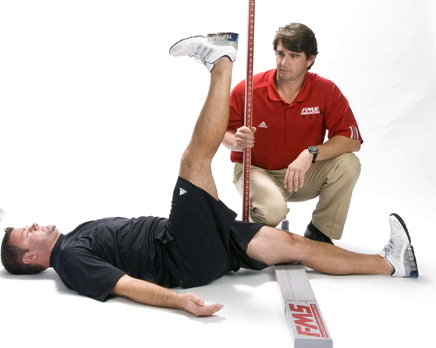In last month’s Training With Purpose article we outlined the importance of weighing your goals and objectives against the realities of time and actual enjoyment. This purpose should drive all decisions in regards to the type of program you decide to undertake and once identified help you choose a training program that actually works for you. But before diving into any of the multitude of program options available there is one last, truly essential piece to consider.
And at this point we need to make a very clear point. If the primary focus or purpose of your training program is “aesthetic” at its roots (i.e. getting “cut” or “bulking up”), then stop reading. In fact, it’s probably best that you unsubscribe from our publication entirely. There will be little to nothing for you to learn from this point forward.
If on the other hand, you value true fitness, durability and longevity then this month’s column may in fact be the most important article we’ll ever write. Even if you never employ a single one of the principles, methods or exercises we’ve discussed thus far and will discuss in even more depth moving forward, you will gain significant long term advantages from reading this article and following through on its recommendations. Let’s continue.
The human body is an amazing organism: highly adaptable, proficient across a variety of strength and cardiovascular demands, and arguably built to hunt in virtually any terrain or environment on Earth. As mentioned in Rise of the Hunter Athlete, we humans are uniquely designed from our brains to our toes to run, jump, climb, stalk, track, throw, lift and carry heavy loads unlike any other species that roams this Blue Planet.
But the problem is we don’t use our bodies to their full potential on a regular basis anymore. We sit at desks throughout the day, and sit in vehicles on our commutes to and from home, then sit on our asses when we finally do get home. When we try to “train” and stay fit, most of us go to a gym and use machines and equipment that don’t even come close to replicating the demands of moving through and over rough terrain, let alone with heavy loads on our backs. Then, when we try to push our limits in the mountains or in any non-engineered environment our bodies simply aren’t capable of dealing with the demands being placed on it. Our knees fail, our legs fail, our backs fail and our ankles fail. But there is a way to reduce the frequency with which you get injured and more importantly identify dysfunction and imbalances in our muscles, joints and soft-tissues before you get injured.

Photo Property Functional Movement Systems
The reality is what we do on a day to day basis matters. Our body adapts to the consistent demands it faces and the positions it’s placed in. How does your body feel after a long flight? Do you stand up stiff, and lethargic? Compound that effect over days, weeks, months and years of working and commuting. That’s the effect sitting for prolonged periods has on your body. Throw a few injuries into your history and the body’s ability to adapt to harsh, natural environments is even more compromised. You can compensate for these injuries and the realities of your day to day life for years or even decades but over time it catches up with you. So what’s the answer?
As world renowned physical therapist, and functional movement guru Gray Cook puts it, “first move well, then move more”. These are words to live by.
Enter the Functional Movement Screen or what’s simply known as the FMS.
For decades, the prevailing wisdom when it came to sports and overuse injuries was no pain equals no problem but as we came to appreciate the sheer complexity of the human body and just how inter-related every moving part really is we started to realize that a lack of pain did not necessarily mean there wasn’t a problem hiding beneath the surface. Over the years research started to demonstrate that right-left asymmetries and major limitations increased injury potential and decreased a person’s “functional effectiveness” aka their ability to perform at their individually optimized level.
We started to understand that imbalances, asymmetries or dysfunction in a person’s muscles, joints, connective tissues (fascia) and central or peripheral nervous system were the culprits behind a laundry list of overuse and activity related injuries common in the active population. And even more importantly, we learned we could identify many of these imbalances and asymmetries ahead of the presence of pain by paying attention to how a person moved during a given task. Once these imbalances or asymmetries were identified we could then focus on addressing them with corrective exercises, stretches or treatments and hopefully prevent an injury from occurring at all. And this is the key.
Photo Property Functional Movement Systems
If we’re not only going to reduce the risk of overuse injuries but more importantly really and truly tap into our full potential when training and preparing for extended mountain hunts it is integral to identify these imbalances and limitations before putting significant demands on our bodies. Can we compensate? Sure, but those compensations can only work for so long and will eventually catch up with us. Do you want a hunt you’ve been planning for all year to be interrupted by a preventable injury? Do you want your training program derailed by exercises that aren’t appropriate for your body’s capabilities? Do you want to hunt well into your golden years, strong and fit as possible? Then you need to pay attention to movement screening.
And although there are various pre-activity screening tools and systems on the market today, none of them are as broadly used as the Functional Movement Screen or FMS, originally conceived of in 1995 by Gray Cook, quoted above, and Dr. Lee Burton. Based on completing seven “fundamental movement patterns” it is one of the most efficient and effective tools for capturing objective movement data, and in our opinion is an essential pre-activity participation procedure to go through. It’s efficient, powerful and can be administered by a qualified trainer at minimal cost relative to the cost of injury treatments and management. Not to mention the costs of not being able to train and hunt the way you want to.
Now to be clear, the FMS is not intended to diagnose orthopedic problems but rather to demonstrate limitations or asymmetries in healthy individuals with respect to basic movement patterns. If you are in actual pain or have just been injured, the FMS is not appropriate as pain will affect how you move and skew the results. If you’ve had injuries in the past but are no longer in pain, then you’re good to go to have the screening test completed by a certified trainer.
Photo Property Functional Movement Systems
The FMS test requires a balance of mobility and stability, placing the individual in extreme positions where weaknesses and imbalances become noticeable if appropriate stability and mobility is not utilized. These fundamental movement patterns are:
- The deep squat
- The hurdle step
- The inline lunge
- Shoulder mobility
- The active straight leg raise
- The trunk stability push-up
- Rotary stability
The FMS uses these seven movement patterns to provide a score of a person’s quality of movement. With this in hand, corrective exercises and stretches can be introduced and proper training decisions made. Would you take a rifle on a hunt that hasn’t been cleaned, oiled, sighted-in and practiced with? Hell no. So why should our bodies be any different.
In summary, the FMS is one of the most powerful tools available to you when designing and planning any training program, and even more so when making decisions on a mountain hunting training program due to the sheer demands placed on the body. In our opinion, ignoring the limitations and imbalances that reside in virtually each and every one of us is as dumb as taking a rifle or bow on a hunt without actually knowing how it shoots. Your body is arguably the most important “weapon” you own. And like a good rifle, given proper care and maintenance it will give you years if not decades of service and performance hiking, climbing, and hunting the wild places of this Earth. Start treating it like the invaluable weapon it is.
To find an FMS certified trainer in your area click here.
Adam Janke
Editor in Chief
FMS 1 & 2
Matt Thompson
Field Editor
FMS 1




